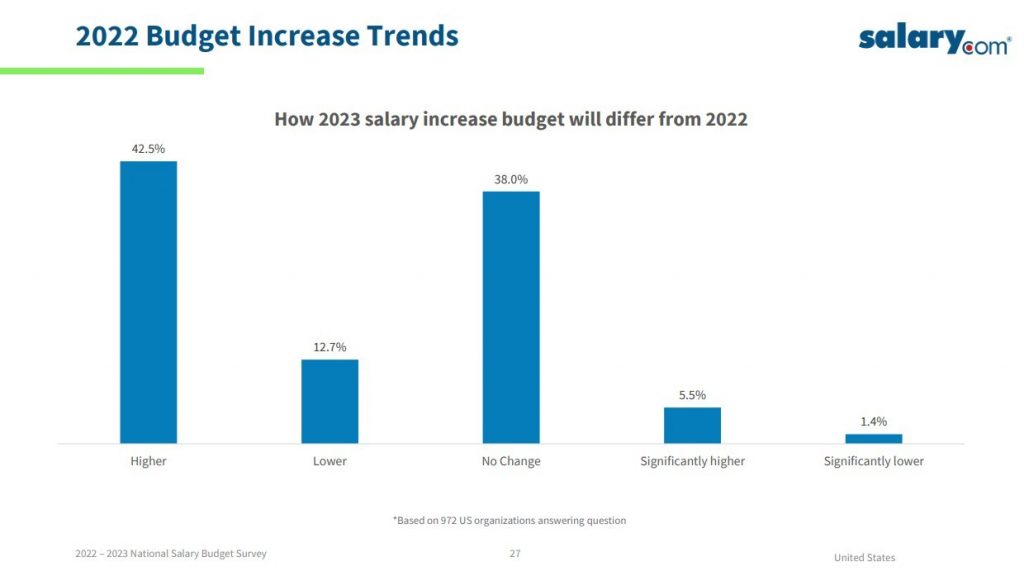Firm Management
Almost Half of U.S. Companies Are Planning to Raise Salary Increase Budgets in 2023
And a quarter of employers plan to give increases in the range of 5% to 7% in 2023, according to Salary.com.
Sep. 16, 2022

According to Salary.com’s Annual U.S. National Salary Budget Survey, the long predominant 3% raise, which started its decline last year, has been replaced by a median raise of 4% across all employee categories.
Forty-eight percent of U.S. employers are planning higher year-over-year salary increase budgets for 2023, continuing an upswing that began in 2022. Even more promising for American workers: a quarter of employers plan to give increases in the range of 5% to 7% in 2023. Salary.com conducted the survey of 1,000-plus organizations in June 2022.

2022 Actual vs. Planned Salary Increases
The survey revealed that 2022 actual salary increases were higher than what was planned in 2021: 22% of organizations gave increases in the range of 4% to 5% versus the 12% that had planned to do so last year.
“2023 promises to be another banner year for employees seeking salary increases,” said Chris Fusco, senior vice president of compensation at Salary.com. “For perspective, in 2020, as the pandemic was taking hold, just under 10% of employers planned a higher salary budget increase than the prior year. In 2023 almost half of employers are planning higher salary budgets.”
Other Survey Highlights
Cost of living increases: When organizations provided cost of living increases, they tended to be more generous in 2022 than in 2021, as average COLA increases rose above 2% for the first time in many years. This is not surprising, given record-high inflation rates in 2022 and much talk of an impending recession. However, smaller organizations (under 500 full-time employees) were more likely to provide COLA increases than larger organizations. Average COLA increases for smaller organizations hovered in the range of 2.5% to 2.7%, higher than the typical 2% provided by larger organizations.
Geography: The Pacific Northwest continues to pay slightly higher salaries than other regions of the country, with median total increases in the 5% range vs. the U.S. median of 4%.
Industries: Healthcare median total increases in 2022 were in the 3% range, significantly less than the U.S. median of 4% with less variability than the overall U.S. population. While notable given the challenges the industry has had in attracting and retaining quality workers, salary increases in the healthcare industry are impacted by reimbursement limits imposed by private and federal health insurers.
Other categories in the survey, such as variable pay and salary structure increases, fell in line with data from prior years. In terms of pay practices, the vast majority of organizations surveyed utilize a common date employee pay increase cycle (87%), with the months of January and April serving as the most popular months.
More than 1,000 human resource professionals across 20 diverse industries (including health care, manufacturing, financial services, retail and wholesale, hospitality and leisure, and education) participated in this year’s survey, which closed June 17, 2022. Now in its 12th year, Salary.com’s U.S. and Canada National Salary Budget Survey is designed to collect critical data on how organizations are budgeting for salary increases over the next year and provides insight into current variable pay practices.
